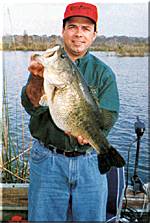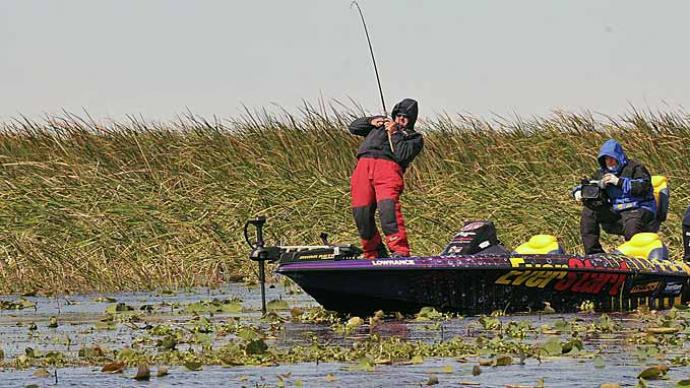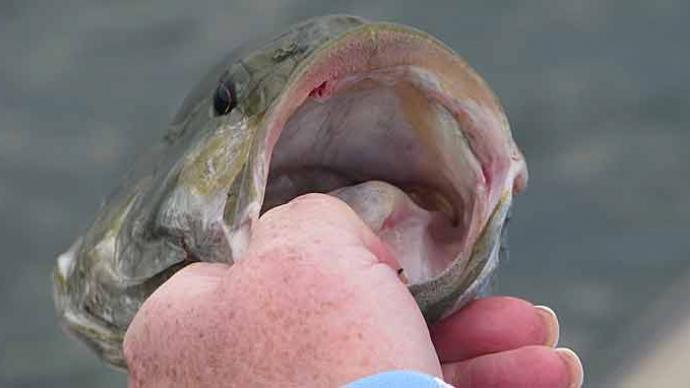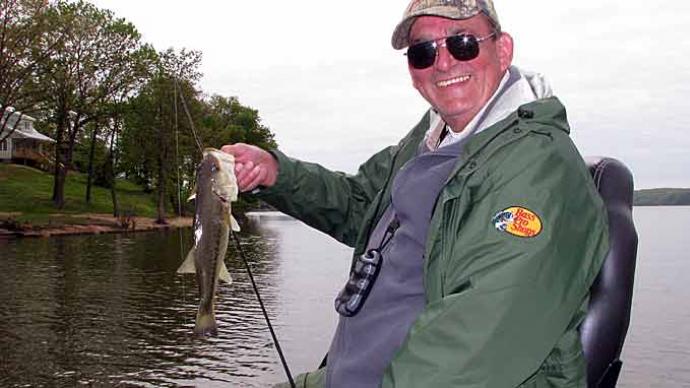
Finally, spring is here. This brings up a pivotal time in bass fishing: spawning bass (or bedding bass). This is a key opportunity and time to catch bass and is a favorite among bass fishermen, especially those who like to sight fish. I believe it is also a good time for beginner anglers. They get to see the fish they are trying to catch, which can keep a novice angler interested. But, it can also be challenging.
Getting the bass to take your lure and then setting the hook in time takes a lot of practice and patience. The reason is that bass eat a lot less while protecting their nest. Some species, like a bluegill, can be caught on their beds much easier. This means they will eat what comes by and not just injure or chase it away. On the other hand, bass will always snap at your lure and quickly spit it off his bed. Sometimes they will hold onto it, though.
If your area hasn't quite gotten up to the mid-'60s or hasn't stayed that way for at least a week, the bass will probably be fattening up. They will be eating as much as they can before going for long periods without food while spawning and guarding their beds. Most lures will work at this time. You will probably want to start using a faster retrieve than during winter. Good lures include rattletraps, plastic worms, jigs, spinnerbaits, and crankbaits. You will probably want to fish in 15 feet of water or less. The bass move up into the shallow water, where they will spawn. If you live very far north, and your lake doesn't get too warm, wait for the upper 50s to come around to start looking for bass on their beds.
If your area is 65 degrees or higher, you will want to be scouting your lake or pond for bass beds. Look for cleared-out areas on the bottom. Depending on lake bottom composition, you'll see white or black blotches. The average bed is 1 to 3 feet across. Sometimes they may be more prominent. I've found that most bass make their nests in less than 5 feet of water and close to the bank. When you find an empty one, you may have spooked the bass away; so don't think there isn't one around. Stop, back up a few feet and wait a minute or two. If you don't see one by then, move on.
Now, let's move on to your tackle. I recommend a 6-foot 6-inch rod for medium casting or spinning reels. I wouldn't use a line over 12-pound test for this type of fishing unless you find a bed in thick cover, but braided line is out of the question. You only want the bass to see your lure, not the line. I strongly suggest using extra sharp bass hooks. Brands to look for are Gamakatsu, Owner, Daiichi, and VMC. A 1/0 or 2/0 size is a good choice. These will cost you about $1.50 extra than your regular hooks, but you will want them because bass that are bedding won't hang on to your lure for very long. All they want is to get it off their bed.
Your essential lures here are soft plastics. My most productive one is a Junebug-colored Culprit lizard with a 2/0 hook and a small split shot. I always rig my lures weedless. Other commonly used plastic baits are trusty old plastic worms, crawfish, french fries, and floating worms (generally used as a jerkbait).
Before setting out to catch these fish, it is good to invest some money in a pair of polarized sunglasses. If you wear eyeglasses, they make clip-on types too. Polarized sunglasses significantly increase your ability to see underwater. This can be a big help when trying to catch spawning bass, especially if the water is a little muddy.
Once you find a bed, reposition yourself to where you can see the bed well but are far enough away that the bass will not become spooked. A reasonable distance is about 7 feet away. Often, even if you stand right over a bed on the bank, the bass will not go away. But it won't bite. If you are fishing in stained water, you may be able to get closer. Now, cast, flip or pitch your lure just beyond the bed. Slowly crawl it onto the very edge of the bed, then pause. Wait for about five seconds and then crawl it to the center of the bed. The bass is probably now looking at your lure. The bass is anxious and wants to get it away from its eggs. The whole point of this type of fishing is to make your lure look like it is trying to eat the bass's eggs. Next, twitch your lure very slightly a couple of times. Now, wait for the bass to move in. He will probably get close to your lure, sometimes almost right to his nose. Twitch your lure as softly as possible (whenever you do twitch your lure, you don't want it to move very far). If the bass snaps at your lure or sucks it in, don't set the hook just yet. Look to see if he got the pointed end of the hook past his jawbone. If he did, set the hook as quickly as you can. Repeat these steps if he just picked it up by the tail and spit it off his bed. It may take a while for a bass to decide to take in more of the lure, so be patient.
Unless you are in a tournament, you should always release spawning bass as quickly as possible. The longer the bass is deprived of oxygen, the less chance it will survive. If the bass dies, there is a greater chance that predator fish or other animals will eat the eggs. If that happens too much, there can be a significant decline in the bass population or whatever fish you caught that was spawning. So please, especially now, practice catch and release. I'm not saying keeping fish is terrible. Now and then, it's good to keep your catch. I, for one, love fried bass. But if everyone always kept the bass, they caught, myself and many other people would be out of a life!




